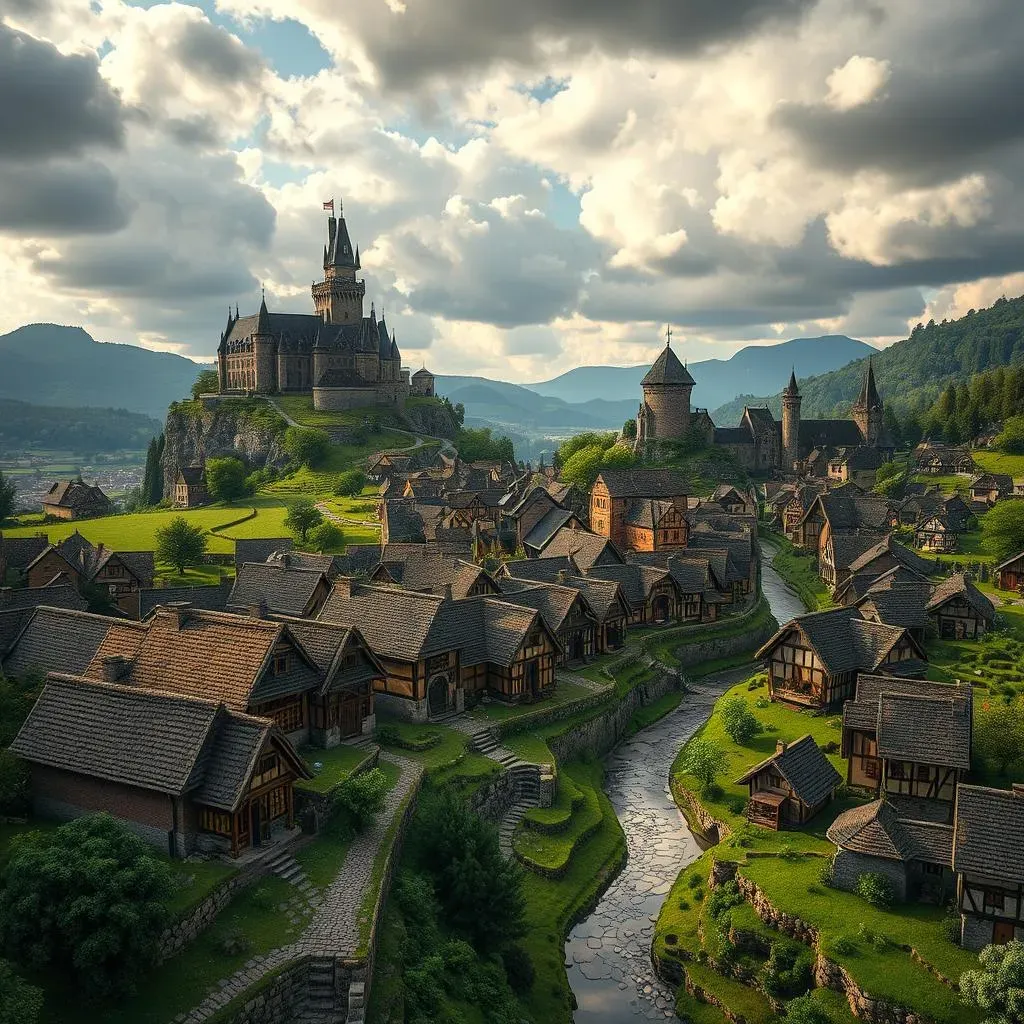Table of Contents
Ever dream of building your own bustling medieval village in Minecraft? A place where cobblestone paths wind between charming houses, leading to a grand castle overlooking it all? But where do you even start? Creating a truly immersive medieval town, especially one where the houses feel seamlessly integrated, can be a daunting task. That's where the magic of **medieval minecraft house town integration** comes in. This guide will walk you through everything you need to know to transform your blocky ambitions into a breathtaking medieval town. From initial planning and essential house designs to step-by-step building techniques and advanced tips, we'll cover it all. Get ready to learn how to perfectly blend your medieval houses into a thriving, cohesive town that will impress every player who visits.
Planning Your Perfect Medieval Minecraft House Town Integration
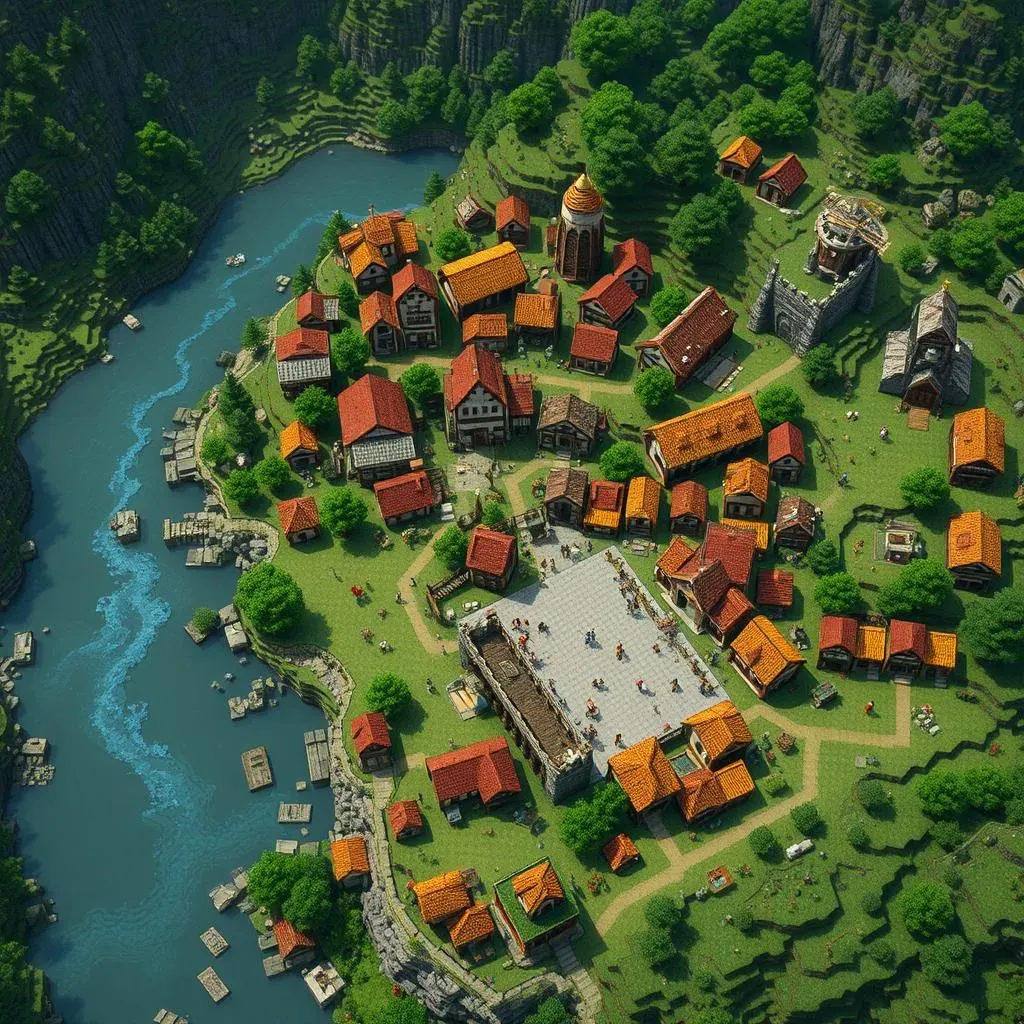
Planning Your Perfect Medieval Minecraft House Town Integration
Laying the Foundation: Location, Location, Location
So, you're ready to dive into building your medieval masterpiece? Awesome! But hold your horses before you start placing cobblestone willy-nilly. First things first, you gotta pick the perfect spot. Think about it – where would a medieval town actually thrive? Probably not smack-dab in the middle of a desert, right? Consider biomes that make sense: plains, forests, maybe even rolling hills. A river or lake nearby? Bonus points! Natural resources are key for any good settlement, even a virtual one.
Once you've got your biome picked out, start envisioning the town's layout. Don't just slap houses down randomly. Think about flow and function. Where will your main square be? Where will the market stalls go? Will you have distinct residential areas? Medieval towns weren't grids; they grew organically, but with some underlying logic. Imagine how people would actually move around and live in your town. Sketch it out roughly, even if it’s just a mental map. Trust me, a little planning now saves a ton of headaches later when you're trying to cram in that blacksmith next to the bakery and realizing you're out of space.
Zoning and Themes: Defining Your Town's Character
location? Check. Basic layout? Roughly sketched. Now for the fun part: giving your town some personality! Think about different zones within your medieval minecraft house town integration. Maybe you want a bustling market district, a quieter residential area, and a more fortified section near your castle or town hall. Zoning helps create visual variety and makes your town feel more realistic and lived-in. It's not just a bunch of houses; it's a community!
And what about the overall theme? Are you going for a cozy, rustic village nestled in the woods? Or a grand, imposing stone city perched on a hill? Your theme will influence everything from your building materials (lots of wood and logs for rustic, stone and bricks for grand) to the types of houses you build and the decorations you use. Sticking to a theme will make your medieval minecraft house town integration feel cohesive and intentional, rather than a random collection of buildings. Plus, it's way more satisfying when everything just *fits* together, you know?
Planning Element | Considerations |
|---|---|
Biome Selection | Plains, forests, hills are ideal; consider resource availability and natural features. |
Town Layout | Visualize flow, functional areas (market, residential), organic growth, not rigid grids. |
Zoning | Create distinct districts (market, residential, fortified) for variety and realism. |
Theme | Rustic village, grand city, etc.; influences materials, house styles, and decorations for cohesion. |
Essential Medieval House Designs for Seamless Town Integration in Minecraft
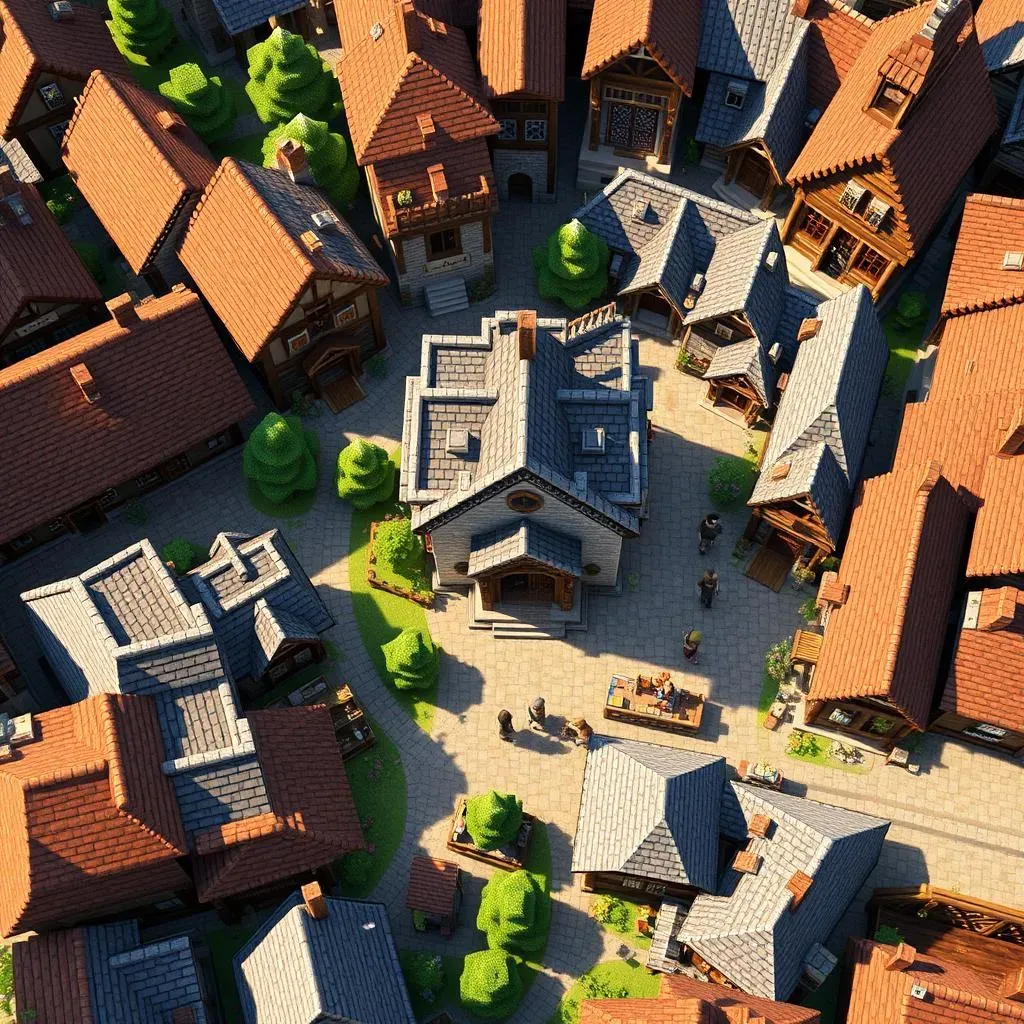
Essential Medieval House Designs for Seamless Town Integration in Minecraft
Building Blocks of a Medieval 'Hood: Core House Styles
Alright, so you've got your town planned out, now comes the really fun part: designing the houses! For a truly believable medieval minecraft house town integration, you can't just spam the same cookie-cutter house everywhere. Variety is the spice of village life, even in block form! Think about the basic house types you'd find in a real medieval town. You'd have your smaller cottages for commoners, slightly larger townhouses for merchants or wealthier folks, and maybe even some unique structures like a tavern or a blacksmith's shop that also doubles as a home. Start with these core styles in mind, and you're already on the right track to a more authentic feel.
Consider using a few key materials to tie everything together visually. Things like cobblestone, wood logs (oak and spruce are great for medieval builds), wood planks, and maybe some stone bricks. These are classic medieval building blocks, and using them consistently throughout your town, even with variations in house design, will create a sense of unity. It’s like having a shared color palette for your town – it makes everything look like it belongs together, even if the houses themselves are different shapes and sizes. This is crucial for that seamless integration we're aiming for!
Cottages and Townhouses: Varying Size and Detail
Let's dive a bit deeper into those core house styles. For your basic cottages, keep them cozy and relatively small. Think one or two stories, maybe with a simple gable roof. Use lots of wood and cobblestone for a rustic look. Details like window boxes (flower pots work great!), small gardens, and maybe a chimney made of cobblestone can really add charm. These are your bread-and-butter residential buildings, and you'll want a good number of them to populate your town. Don't be afraid to vary the roof shapes slightly or add little extensions to make each cottage feel a bit unique, even within a similar style.
Then you've got your townhouses. These are for your slightly more well-to-do villagers. Think taller, maybe three stories, with more elaborate roof designs. You can incorporate more stone bricks or even some half-timbering for added detail. Balconies, bay windows (using stairs and trapdoors!), and more ornate doorways can help distinguish townhouses from simpler cottages. These should still fit within your overall medieval theme, but they can be a bit grander and more detailed, reflecting the higher status of their inhabitants. Mixing cottages and townhouses creates a nice visual hierarchy and makes your town feel more socially diverse, just like a real medieval settlement!
House Type | Characteristics | Materials | Details |
|---|---|---|---|
Cottage | Small, 1-2 stories, simple roof | Wood, Cobblestone | Window boxes, small gardens, chimneys |
Townhouse | Larger, 2-3 stories, elaborate roof | Stone Bricks, Wood, Cobblestone | Balconies, bay windows, ornate doorways |
Beyond the Basics: Taverns, Shops, and Unique Structures
cottages and townhouses are essential, but a town is more than just houses, right? For true medieval minecraft house town integration, you need those special buildings that give your town character and purpose. Think about a tavern – the heart of any social gathering! Make it a bit larger and more imposing than a regular house. Use darker woods and maybe some exposed stone for a rugged, inviting feel. Don't forget a prominent sign out front (item frames with maps or banners work great!).
Shops are another must-have. A blacksmith, a bakery, a butcher, maybe even a small apothecary. These can be incorporated into townhouses or stand alone as smaller shops. Use details to indicate their function – an anvil and some crafting tables outside the blacksmith, barrels and crates near the bakery, hanging meat (item frames with redstone or leather) at the butcher. And don't forget unique structures! A church, a town hall, a watchtower – these landmarks add visual interest and give your town a sense of history and importance. These buildings can be larger and more elaborate, really showcasing your building skills and becoming focal points within your medieval minecraft house town integration.
StepbyStep Guide: Achieving Flawless Medieval Minecraft Town Integration with Houses
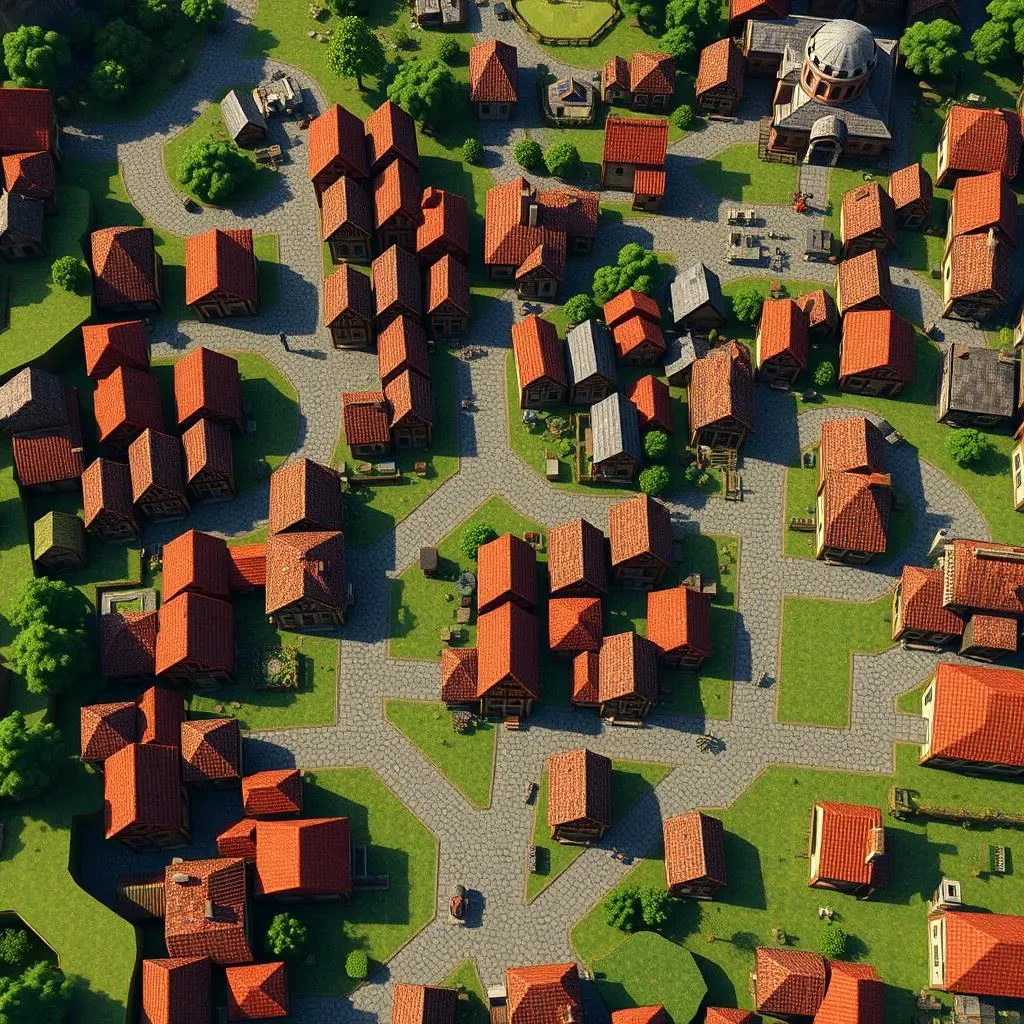
StepbyStep Guide: Achieving Flawless Medieval Minecraft Town Integration with Houses
Step 1: Marking Out Your Territory & Roads
Alright, let's get down to the nitty-gritty of actually building this medieval marvel! First thing's first in our **step-by-step guide: achieving flawless medieval minecraft town integration with houses** is laying out the groundwork, literally. Grab some blocks – I usually use cobblestone or gravel for medieval roads – and start marking out your main roads and pathways. Think about how you want people to move through your town. Main roads should be wider, branching off into smaller paths leading to different areas. Don't make them perfectly straight! Medieval roads were often winding and followed the natural terrain. Embrace the curves!
As you're plotting your roads, start thinking about where your key buildings will go – that castle we talked about, the market square, the church. These landmarks will anchor your town, and your roads should naturally flow towards and around them. Imagine you're a medieval town planner (if there was such a thing!). You're not just building roads in isolation; you're creating a circulatory system for your town, connecting all the important bits. And remember, leave space between your roads and where the houses will eventually go. You don't want houses crammed right up against the street; give them a little breathing room, maybe some front gardens or pathways.
Step 2: House Placement and Street Alignment
Now for the exciting part: placing those houses! But hold on, don't just plop them down randomly yet. In this crucial step of our **step-by-step guide: achieving flawless medieval minecraft town integration with houses**, we focus on thoughtful placement. Follow those roads you just laid out. Houses should face the streets, creating a sense of community and street frontage. Imagine villagers walking out their front doors and onto a bustling path. That's the vibe we're going for!
Vary the spacing between houses. Some can be closer together, especially in denser residential areas, while others might have wider plots, maybe with a bit of garden space in between. Don't be afraid to stagger the houses slightly; not every house needs to be perfectly aligned with the street. A little bit of variation makes things look way more natural and less grid-like. Think about creating little clusters of houses around courtyards or small squares. These pocket neighborhoods add charm and break up long stretches of street. It's all about creating visual interest and a sense of organic growth, making your medieval minecraft house town integration truly shine.
Step | Action | Tips for Success |
|---|---|---|
1. Roads & Paths | Mark out main roads and pathways using cobblestone/gravel. | Embrace curves, connect key areas, consider natural terrain. |
2. House Placement | Place houses facing streets, vary spacing, create clusters. | Stagger alignment, add courtyards, visualize street frontage. |
Advanced Tips & Tricks for Stunning Medieval Minecraft House Town Integration
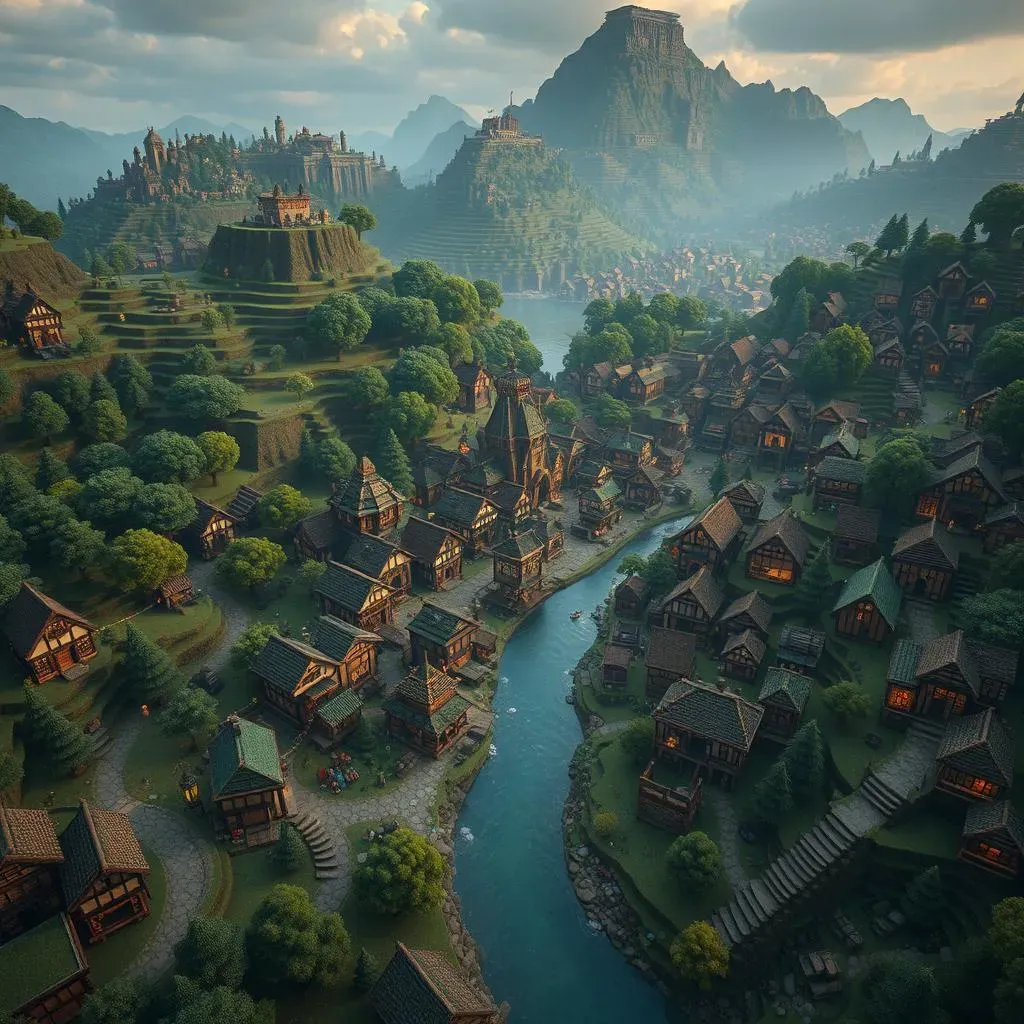
Advanced Tips & Tricks for Stunning Medieval Minecraft House Town Integration
Terraforming and Landscaping: Making it Feel Real
Want to take your medieval minecraft house town integration from good to *jaw-dropping*? It's all about the land around it! Seriously, don't underestimate the power of terraforming and landscaping. Minecraft's default terrain can be a bit...flat. Medieval towns, though? They were built on hillsides, nestled in valleys, perched on cliffs – you name it! Start by shaping the terrain to fit your town's theme. Gently sloping hills, a river valley carved through the landscape, even a raised plateau for your castle – these things add so much depth and visual interest. And don't just stop at the big stuff. Think about smaller details: rolling the land around individual houses, creating little dips and rises, adding retaining walls made of stone to manage different levels. It's these subtle touches that make your town feel like it organically grew out of the landscape, not just slapped on top of it.
Landscaping is the next layer of awesome. Trees are your best friend! Plant them strategically to frame views, create wooded areas around the edges of your town, or even line your main roads with leafy canopies. Vary the types of trees – oak, spruce, birch, even custom trees if you're feeling ambitious! Flowers, bushes (using leaf blocks and berry bushes), and even custom-placed vines can soften the harsh edges of Minecraft blocks and add pops of color. Think about adding little gardens to your houses, maybe a small orchard or a vineyard on the outskirts of town. These details aren't just cosmetic; they tell a story. They hint at the lives of the villagers who inhabit your town, making it feel more alive and believable. Trust me, spending some time on terraforming and landscaping is like adding that secret ingredient that takes your medieval minecraft house town integration to the next level.
Tip | Description | Benefit |
|---|---|---|
Terraforming | Shape the terrain: hills, valleys, plateaus | Adds depth, realism, visual interest |
Landscaping | Strategic use of trees, plants, flowers, vines | Softens edges, adds color, tells a story |
Detailing | Retaining walls, gardens, orchards, vineyards | Enhances realism, creates a lived-in feel |
Detailing and Clutter: Bringing Your Town to Life
your terrain is looking epic, your houses are in place, but something's still missing, right? It's that lived-in, cozy vibe! That's where detailing and clutter come in. This is where you really get to flex your creative muscles and inject personality into your medieval minecraft house town integration. Think about all the little things you'd see in a real medieval town. Carts and wagons parked along the streets, barrels and crates stacked outside shops, hay bales in stables, firewood piles next to houses. These aren't just random blocks; they're storytelling elements!
Use item frames to hang tools outside workshops, create shop signs, or display decorative items. Flower pots, lanterns, and even strategically placed armor stands can add character to doorways and windowsills. Don't forget about the smaller details inside the houses too! Simple furniture made from stairs and slabs, fireplaces with campfires for smoke effects, bookshelves, and even looms (using looms!) can make interiors feel cozy and functional. Overdoing it can make things look messy, but the right amount of clutter makes your medieval minecraft house town integration feel less like a set piece and more like a real, breathing town. It's those little touches that players will notice and appreciate, making your creation truly memorable.
Lighting and Ambiance: Setting the Mood
Let's talk mood! Lighting is absolutely crucial for setting the atmosphere in your medieval minecraft house town integration. Torches are classic medieval lighting, of course, and they're perfect for lining streets and pathways. But don't be afraid to mix it up! Lanterns (made with iron bars and torches or candles) add a touch of elegance, especially hanging outside taverns or wealthier homes. Campfires create a warm, flickering glow and are great for blacksmiths, taverns, or even just cozy outdoor areas. And don't forget about interior lighting! Candles, strategically placed torches, and even hidden light sources like glowstone or shroomlights can make interiors feel warm and inviting without being overly bright.
Think about the time of day and how you want your town to feel at different times. Soft, warm lighting at night creates a cozy, inviting atmosphere. Sunlight streaming through windows during the day makes everything feel bright and cheerful. You can even use different types of lighting to highlight different areas of your town – brighter lights in the bustling market square, softer lights in the quieter residential areas. Experiment with different light sources and placements to find what works best for your town's style and theme. Mastering lighting is a game-changer for creating a truly immersive and stunning medieval minecraft house town integration. It's the difference between a pretty build and a build that truly *feels* alive.
Customization and Unique Touches: Make it Your Own
Alright, you've got the foundations, the houses, the details, the lighting – now it's time to really make your medieval minecraft house town integration *yours*. Don't be afraid to break away from tutorials and add your own unique touches! Think about incorporating custom builds – maybe a unique windmill design, a quirky fountain in the town square, or a hidden garden tucked away somewhere. Personalize houses with different color palettes, roof styles, or window arrangements. Add banners and flags with your town's crest or colors. Maybe even create a little bit of lore for your town – give it a name, a history, maybe even some local legends that you can hint at through hidden details in your builds.
This is where your creativity really shines. Look at real-world medieval towns for inspiration, but don't be afraid to put your own Minecraft spin on things. Experiment with different block combinations, try out new building techniques, and don't be afraid to make mistakes and learn from them. The more you personalize your medieval minecraft house town integration, the more it will stand out and become a truly special creation. It's about going beyond just copying designs and infusing your own personality and vision into your blocky world. So go wild, have fun, and make your medieval town a reflection of your own awesome building style!
Conclusion: Your Medieval Minecraft Town Awaits
Building a medieval Minecraft town with seamlessly integrated houses is an ambitious but incredibly rewarding project. From carefully planning your layout to mastering essential building techniques and adding those crucial finishing touches, you now have the knowledge to bring your vision to life. So, grab your pickaxe, gather your resources, and dive into the world of **medieval minecraft house town integration**. Experiment, have fun, and most importantly, create a town that you are proud to call your own. The possibilities are as limitless as your imagination, and your medieval Minecraft masterpiece is just waiting to be built.
